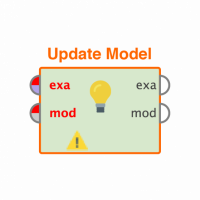Question about operator's complexity
Hello, I would like to know what are time complexities (Big O) of these predictive operators?
- k-NN
- Naive Bayes
- Decision Tree
- Neural Net
And if possible, could anyone please give me psuedocode of (or how to inspect) these operators? because I need to know how the operators work with my data, especially the Decision Tree. Thank you.
Best Answers
-
Options
 Thomas_Ott
RapidMiner Certified Analyst, RapidMiner Certified Expert, Member Posts: 1,761
Thomas_Ott
RapidMiner Certified Analyst, RapidMiner Certified Expert, Member Posts: 1,761  Unicorn
Unicorn
Hi @Rintaspon,
Did you check out mod.rapidminer.com? It allows you to 'guesstimate' how the models behave. Also, there is https://docs.rapidminer.com/studio/operators/ that describes the various operators and algorithms as well. If you really need the code, then you'd have to vist the RapidMiner Github acct for the source code.
0 -
Options
 Telcontar120
Moderator, RapidMiner Certified Analyst, RapidMiner Certified Expert, Member Posts: 1,635
Telcontar120
Moderator, RapidMiner Certified Analyst, RapidMiner Certified Expert, Member Posts: 1,635  Unicorn
Unicorn
As @Thomas_Ott said, mod.rapiminer.com is a great resource.
From a quick-and-dirty perspective, I would rank these algorithms as follows in terms of time intensity to complete:
- Naive Bayes (simple counting and basic math is all that ever happens, it's very efficient)
- k-NN (lazy algorithm takes little time in training but will be slower when applied to new data)
- Decision Tree (straightforward solutions with simple splits, also very fast to compute)
- Neural Net (this is an iterative solution and can be computationally intensive depending on the configuration of number of nodes and hidden layers)
I hope this helps.
0 -
Options
 sgenzer
Administrator, Moderator, Employee, RapidMiner Certified Analyst, Community Manager, Member, University Professor, PM Moderator Posts: 2,959
sgenzer
Administrator, Moderator, Employee, RapidMiner Certified Analyst, Community Manager, Member, University Professor, PM Moderator Posts: 2,959  Community Manager
Community Manager
hello @Rintaspon - I agree with @Telcontar120 and @Thomas_Ott that mod.rapidminer.com is your go-to for day-to-day general sense of complexity. If you are looking for a more theoretical approach to determine Big O (e.g. O(n) vs O(mn) etc..), you are going to find this in comp sci / ML textbooks on the subject. A 30-second google search turned up something like this.
As for pseudocode, again this is normally found in textbooks. Mine is from circa 1990 so I'm not sure you want it.

Scott
0

 Contributor I
Contributor I
Answers
@Telcontar120 @Thomas_Ott @sgenzer Thanks for the good information. I'll look into them